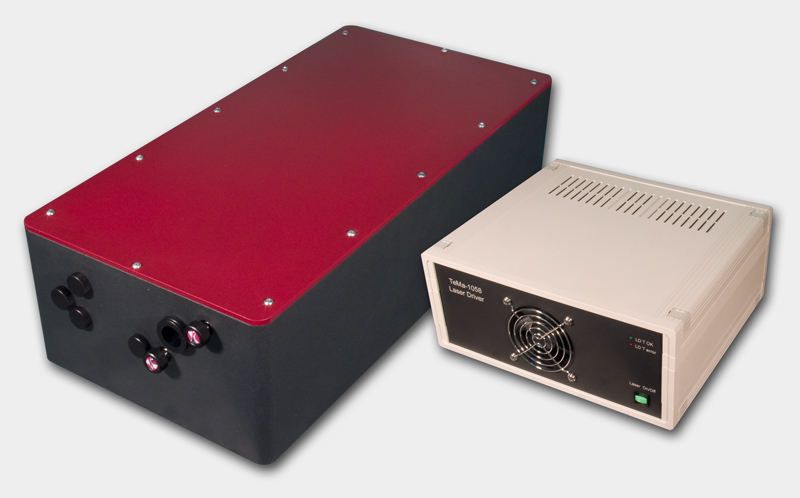with SHG, as opposed to standard fluorescence techniques, the fundamental
laser beam can be infrared and the light-matter interaction depends nonlinearly
on the
photon flux density, so therefore scattering and out of focus photobleaching
would be greatly reduced.
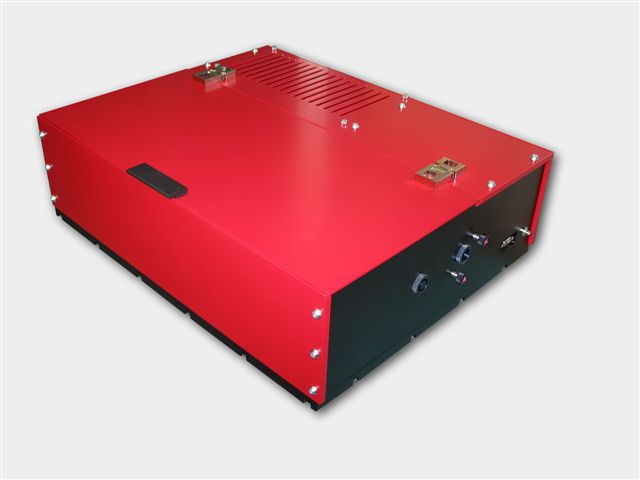 |
Trestles LH Ti:Sapphire
laser
Trestles LH is a new series of high quality femtosecond Ti:Sapphire
lasers for applications in scientific research, biological imaging, life
sciences and precision material processing. Trestles LH includes integrated
sealed, turn-key, cost-effective, diode-pumped
solid-state (DPSS). Trestles LH lasers offer the most attractive pricing
on the market combined with excellent performance and reliability. DPSS LH
is a state-of-the-art laser designed for today’s applications. It combines
superb performance and tremendous value for today’s market and has
numerous advantages over all other DPSS lasers suitable for Ti:Sapphire
pumping. Trestles LH can be customized to fit customer requirements and
budget.
Trestles LH plus OPO
(Optical Parametric Oscillator)
Reserve a
spot in our Femtosecond lasers training
workshop in San Diego, California. Come to learn how to build a
femtosecond laser from a kit
|
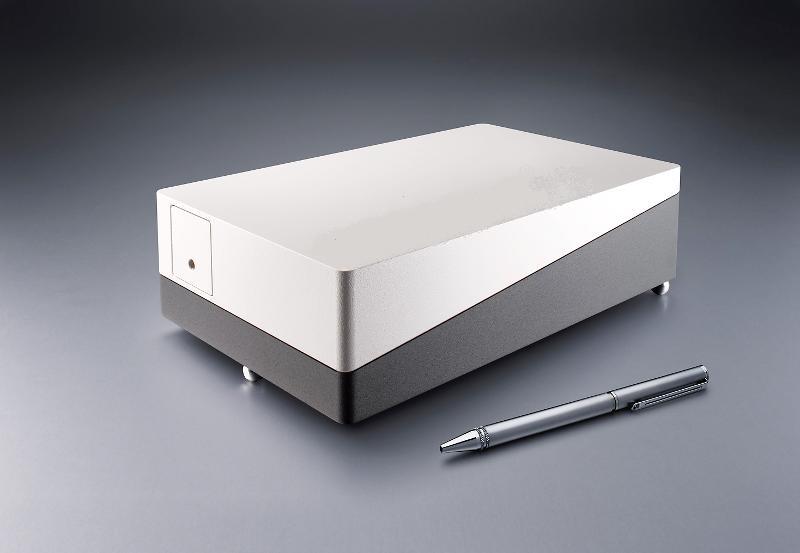 |
DPSS DMPLH lasers
DPSS DMP LH series lasers will pump your Ti:Sapphire laser.
There are LH series lasers installed all over the world pumping all makes & models
of oscillator. Anywhere from CEP-stabilized femtosecond Ti:Sapphire oscillators
to ultra-narrow-linewidth CW Ti:Sapphire oscillators. With up to 10 Watts CW
average power at 532nm in a TEMoo spatial mode, LH series
lasers has quickly proven itself
as the perfect DPSS pump laser for all types of Ti:Sapphire or dye laser.
Ideal for pumping of:
Trestles LH
Ti:Sapphire laser -
ULN ultra low-noise option
T&D-scan laser
spectrometer based on narrow line CW Ti:Sapphire laser
|
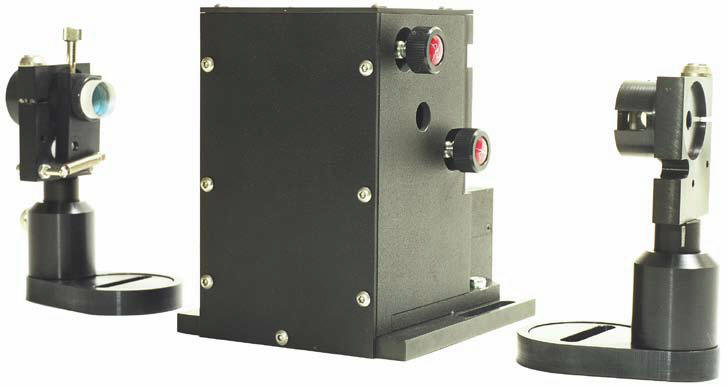 |
Pismo pulse picker
The Pismo pulse picker systems is as a pulse gating system that lets single
pulses or group of subsequent pulses from a femtosecond or picosecond pulse
train pass through the system, and stops other radiation. The system is
perfectly suitable for most commercial femtosecond oscillators and
amplifiers.
The system can pick either single pulses, shoot bursts (patterns of single
pulses) or pick group of subsequent pulses (wider square-shaped HV pulse
modification). HV pulse duration (i.e. gate open time) is 10 ns in the default
Pismo 8/1 model, but can be customized from 3 to 1250 ns upon request or made
variable. The frequency of the picked pulses starts with single shot to 1 kHz
for the basic model, and goes up to 100 kHz for the most advanced one.
The Pockels cell is supplied with a control unit that is capable of synching
to the optical pulse train via a built-in photodetector unit, while electric
trigger signal is also accepted. Two additional delay channels are available
for synching of other equipment to the pulse picker operation. Moreover, USB
connectivity and LabView-compatible drivers save a great deal of your time
on storing and recalling presets, and setting up some automated experimental
setups. One control unit is capable of driving of up to 3 Pockels cells, and
this comes handy in complex setups or contrast-improving schemes. The system
can also be modified to supply two HV pulses to one Pockels cell unit,
making it a 2-channel pulse picker system. This may be essential for
injection/ejection purposes when building a regenerative or multipass
amplifier system.
|
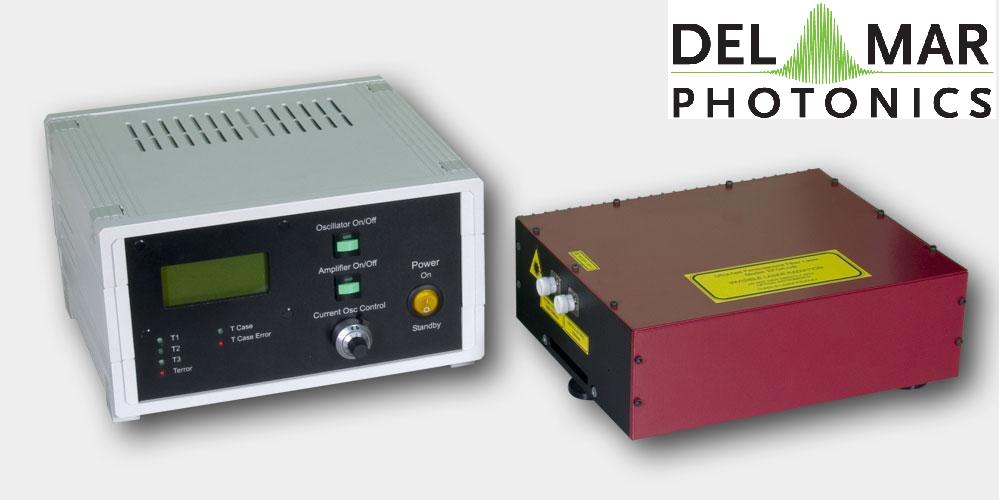
|
Femtosecond fiber laser Model Pearl-70P300
-
request a quote
Femtosecond pulsed lasers are used in many fields of physics, biology,
medicine and many other natural sciences and applications: material processing,
multiphoton microscopy, «pump-probe» spectroscopy, parametric generation and
optical frequency metrology. Femtosecond fiber lasers offer stable and steady
operation without constant realignment.
The Pearl-70P300 laser comprises: a passively mode-locked fiber laser, providing
pulses with repetition rate 60 MHz and having duration of 250-5000 fs, an
amplifier based on Er3+ doped fiber waveguide with pumping by two laser diodes,
a prism compressor for amplified pulse compression.
Pearl Ultra-Compact
Ultrafast Picosecond Fiber
Oscillator
|
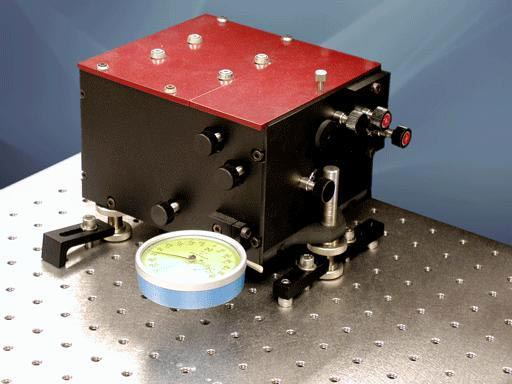
|
Reef femtosecond autocorrelators
The autocorrelation technique is the most common method used to determine
laser pulse width characteristics on a femtosecond time scale.
The basic optical configuration of the autocorrelator is similar to that of an
interferometer (Figure.1). An incoming pulse train is split into two beams of
equal intensity. An adjustable optical delay is inserted into one of the arms.
The two beams are then recombined within a nonlinear material (semiconductor)
for two photon absorption (TPA). The incident pulses directly generate a
nonlinear TPA photocurrent in the semiconductor, and the detection of this
photocurrent as a function of interferometer optical delay between the
interacting pulses yields the pulse autocorrelation function. The TPA process is
polarization-independent and non-phasematched, simplifying
alignment.
Reef-RT autocorrelator measures laser
pulse durations ranging from 20 femtoseconds to picosecond regime. It measures
pulse widths from both low energy, high repetition rate oscillators and high
energy, low repetition rate amplifiers. Compact control unit operates
autocorrelator head and optional spectrometer through on-screen menus.
Autocorrelation trace and spectrum can be displayed and analyzed on screen or
downloaded to remote computer.
New:
Reef-20DDR autocorrelator
-
Multishot-FROG for femtosecond fiber laser oscillator and amplifier
Collinear (interferometric) autocorrelation
for 1300-2000 nm wavelength range |
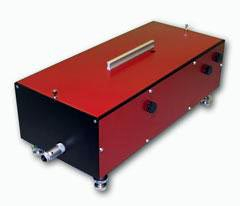 |
Trestles Fourth Harmonic Generator -
request a quote
Trestles FHG is designed to work with
Ti:sapphire lasers, such as the Trestles Ti:sapphire laser to provide fourth
harmonic generation. Trestles FHG is an affordable and easy solution to
generating pulses around 200 nm.
Trestles FHG is available in two versions. The first version uses the third
harmonic mixed with the fundamental wavelength to produce fourth harmonic
generation. This option provides the fundamental, as well as the second, third
and fourth harmonics. For input of 810 nm, 1 W, 82MHz and 50 fs, output of the
fourth harmonic is at 203 nm, 300-400 fs and power is 3 mW. The second option
uses two separate second harmonic generation stages to produce fourth harmonic
generation. With input of 810 nm, 1 W, 82 MHz and 50 fs, output of the fourth
harmonic is at 210 nm, pulse width of 500 fs and power of 10 mW.
The Trestles FHG from Del Mar Photonics is an easily installed solution for
adding functionality to any femtosecond laser system. Extended ranges will
increase capabilities for research, and specific applications such as microscopy
and spectroscopy.
|
 |
Near IR viewers
High performance infrared
monocular viewers are designed to observe radiation emitted by
infrared sources. They can be used to observe indirect radiation of IR
LED's and diode lasers, Nd:YAG, Ti:Sapphire, Cr:Forsterite, dye lasers and
other laser sources. IR viewers are ideal for applications involving the
alignment of infrared laser beams and of optical components in
near-infrared systems. Near IR viewers
sensitive to laser radiation up to 2000 nm.
The light weight, compact monocular may be used as a hand-held or facemask
mounted for hands free operation.
Ultraviolet viewers are
designed to observe radiation emitted by UV sources. |
